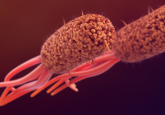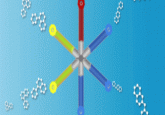Parasitic fish helps cancer drugs swim through the blood–brain barrier

The blood–brain barrier presents a major challenge for drug delivery. However, the lamprey’s immune system could hold its key.
The blood–brain barrier (BBB) is a semipermeable membrane that separates the blood from the brain and CNS, and is critical to the brain’s protection. However, this protection is a double-edged sword when it comes to treating the brain, as it can be difficult to get drugs across the barrier.
Researchers from the University of Wisconsin–Madison (WI, USA) and the University of Texas at Austin (TX, USA) have attempted to solve this issue using molecules from the immune system of the lamprey, a parasitic, jawless fish. Lampreys have similar immune systems to humans, but instead of producing antibodies they produce defensive molecules called VLRs.
“Molecules like this normally couldn’t ferry cargo into the brain, but anywhere there’s BBB disruption, they can deliver drugs right to the site of pathology.”
During stroke, trauma, multiple sclerosis or brain tumors, the BBB in the affected area becomes leaky, and the extracellular matrix (ECM) exposed. The team theorized that VLRs that target the ECM could be used to take advantage of such an entry point for a variety of disorders – recent work has also looked at targeting ECM, but in a way specific to injury or one disease.
“Molecules like this normally couldn’t ferry cargo into the brain, but anywhere there’s BBB disruption, they can deliver drugs right to the site of pathology,” explained Eric Shusta (University of Wisconsin–Madison).
The team vaccinated lampreys with ECM, discovering molecules with ECM specificity. These were harnessed to doxorubicin, an FDA-approved chemotherapy. They went on to demonstrate the accumulation of the molecules at the site of disrupted BBB in mice, but not in healthy brain tissue or other organs.
- Organ chips model blood—brain barrier
- A postman particle: delivering therapeutics for osteoarthritis
- Novel drug combination converts glia to restore neuron function
Theoretically, the technique could be combined with methods that temporarily open up the BBB at specific sites. Using the ECM could also result in accumulation of higher doses of drugs than is possible with direct delivery.
“Similar to water soaking into a sponge, the lamprey molecules will potentially accumulate much more of the drug in the abundant matrix around cells compared to specific delivery to cells,” noted John Kuo (University of Texas at Austin). Targeting the ECM could also avoid the tendency of brain cells to pump out chemicals.
The team now intends to link the molecules to other anti-cancer drugs and to investigate using them to diagnose BBB disruption through linkage with probes.
“I’m excited about trying this strategy in different disease model systems,” commented Kuo. “There are several disease processes that disrupt the blood-brain barrier and we could conceive of delivering a variety of different therapies with these molecules.”





